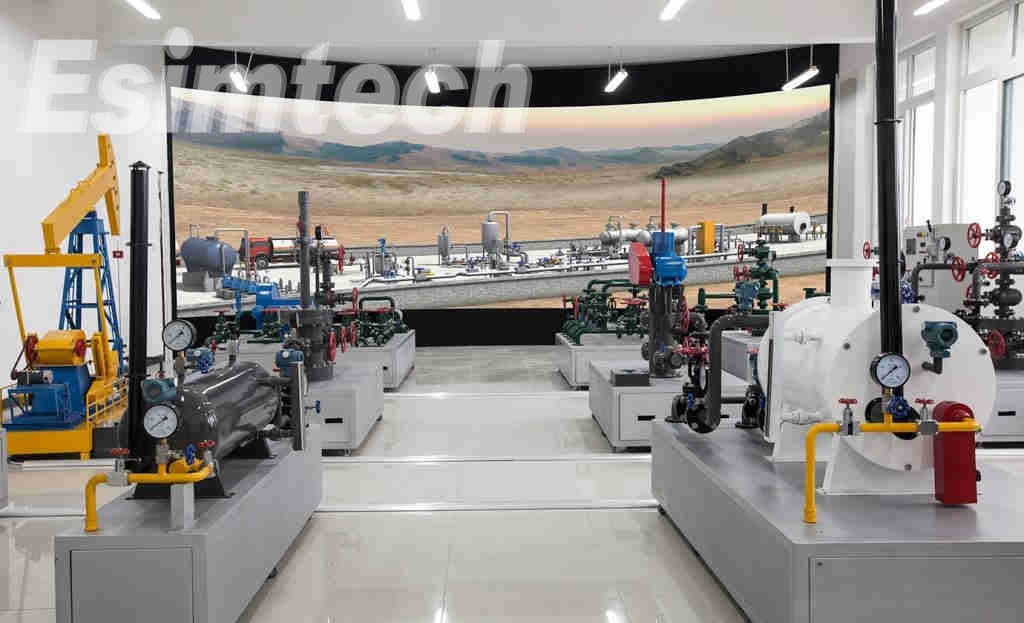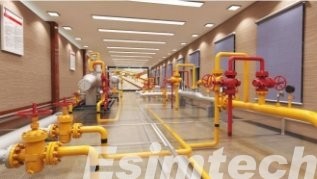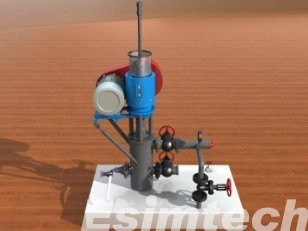Why the Oil Recovery Simulator is Important in Optimizing and Maximizing Oil Recovery Process
Maximizing oil recovery from reservoirs is a never-ending task in the oil and gas sector. Engineers and researchers are turning to innovative technology to optimize the recovery process when traditional extraction methods reach their limits. The Oil Recovery Simulator adopts sophisticated modeling technology to revolutionize the approach to oil recovery. In this essay, we will look in depth at the Oil Recovery Simulator, evaluating its essential features, benefits, successful case studies, and profound impact on the petroleum industry.

What is the Oil Recovery Simulator
The Oil Recovery Simulator is a complete software program that models and simulates oil recovery operations. It makes use of modern reservoir simulation techniques to accurately recreate the behavior of oil reservoirs under a variety of situations. The simulator combines geological, petrophysical, and production data to generate a virtual picture of the reservoir that engineers may use to assess and optimize oil recovery tactics.

Key Features and Functionality of the Oil Recovery Simulator
Reservoir Modeling
The simulator employs sophisticated algorithms to generate precise reservoir models that effectively capture the subsurface’s geological intricacies. To ensure a complete picture of the reservoir, it incorporates data such as well logs, core samples, and seismic measurements.
Fluid Flow Simulation
The simulator simulates the fluid flow behavior within the reservoir using mathematical models. It takes into account elements like porosity, permeability, and fluid properties to forecast how oil, water, and gas will behave during the production and injection processes.
Enhanced Oil Recovery (EOR) Techniques
Engineers can use the simulator to mimic various EOR approaches such as water flooding, gas injection, and chemical flooding. Engineers can analyze the success of these techniques and optimize the selection and implementation of EOR technologies by examining their impact on reservoir behavior.
Operational Optimization
Engineers can use the simulator to optimize operational decisions such as well placement, production rates, and injection tactics. Engineers can discover the most efficient and cost-effective ways for maximizing oil recovery by studying various scenarios and their potential results.
Economic Analysis
Economic analysis tools are included in the simulator to assess the financial sustainability of oil recovery projects. It takes into account aspects including production costs, oil prices, and project economics to help with decision-making and investment planning.

Advantages of the Oil Recovery Simulator
Improved Decision-making
The simulator allows engineers to make informed decisions about production and injection techniques by providing a realistic and accurate simulation of reservoir behavior. It enables the evaluation of different scenarios, making it easier to identify the most effective tactics for maximizing oil recovery.
Optimal Resource Allocation
The simulator aids in the optimization of resource allocation, such as wells, facilities, and equipment. Engineers can discover the most efficient use of resources, reduce expenses, and improve overall operational efficiency by modeling alternative operating situations.
Enhanced Reservoir Understanding
The simulator improves engineers’ understanding of reservoir dynamics through extensive reservoir modeling and fluid flow simulation. It provides insight into fluid displacement, sweep efficiency, and reservoir performance, allowing engineers to spot possible issues and create appropriate recovery solutions.
Risk Mitigation
The simulator facilitates in the identification and mitigation of operational risks in oil recovery projects. Engineers may examine safety measures, emergency response plans, and potential environmental implications by modeling probable risks, assuring the highest degree of safety and risk management.
Cost Reduction
The simulator reduces manufacturing costs by optimizing operating tactics and avoiding resource waste. Engineers can use it to find cost-effective solutions, increase production efficiency, and maximize the economic feasibility of oil recovery operation.
Training and Education
It is a great simulation tool for training and education in the oil and gas industry. It offers engineers and students a realistic and dynamic environment in which to obtain hands-on experience in oil recovery operations, boosting skill development and knowledge acquisition.

Case Studies of the Oil Recovery Simulator
Several real-world case studies highlight the Oil Recovery Simulator’s effectiveness in boosting oil recovery efforts. In a mature oil field, for example, engineers utilized the simulator to evaluate the influence of water flooding and chemical flooding procedures on production rates. They determined the best injection rates and chemical concentrations by modelling various scenarios, resulting in a considerable improvement in oil recovery rates.
In another case, a global oil corporation used the simulator to optimize horizontal well location in a confined reservoir. They were able to identify the most productive locations for well installation using thorough reservoir modeling and simulation, resulting in greater reservoir sweep efficiency and increased oil recovery.

Future Developments of the Oil Recovery Simulator
The Oil Recovery Simulator is still evolving, thanks to advances in modeling technology and rising demand for better oil recovery.
Integration with Artificial Intelligence (AI)
AI methods, such as well placement optimization and real-time production monitoring, can be implemented into the simulator to improve decision-making and automate some operations.
Data Analytics and Machine Learning
The simulator can evaluate large volumes of reservoir data and optimize oil recovery strategies using big data analytics and machine learning techniques.
Integration with Real-time Data
Engineers can make fast decisions based on up-to-date information by integrating real-time data streams from sensors and monitoring devices into the simulator.
Sustainable and Environmentally Friendly Practices
By simulating the influence of various techniques on environmental aspects such as water usage, greenhouse gas emissions, and ecological consequences, the simulator can aid in the development of sustainable oil recovery practices.
Summary
Engineers and researchers can use the Oil Recovery Simulator to maximize their oil recovery operations. The simulator assists in decision-making, resource allocation, risk avoidance, and cost reduction by properly modeling reservoir behavior and simulating numerous situations. As technology advances, the Oil Recovery Simulator will become increasingly important in maximizing oil recovery and guaranteeing the efficient and sustainable use of this precious energy resource.
